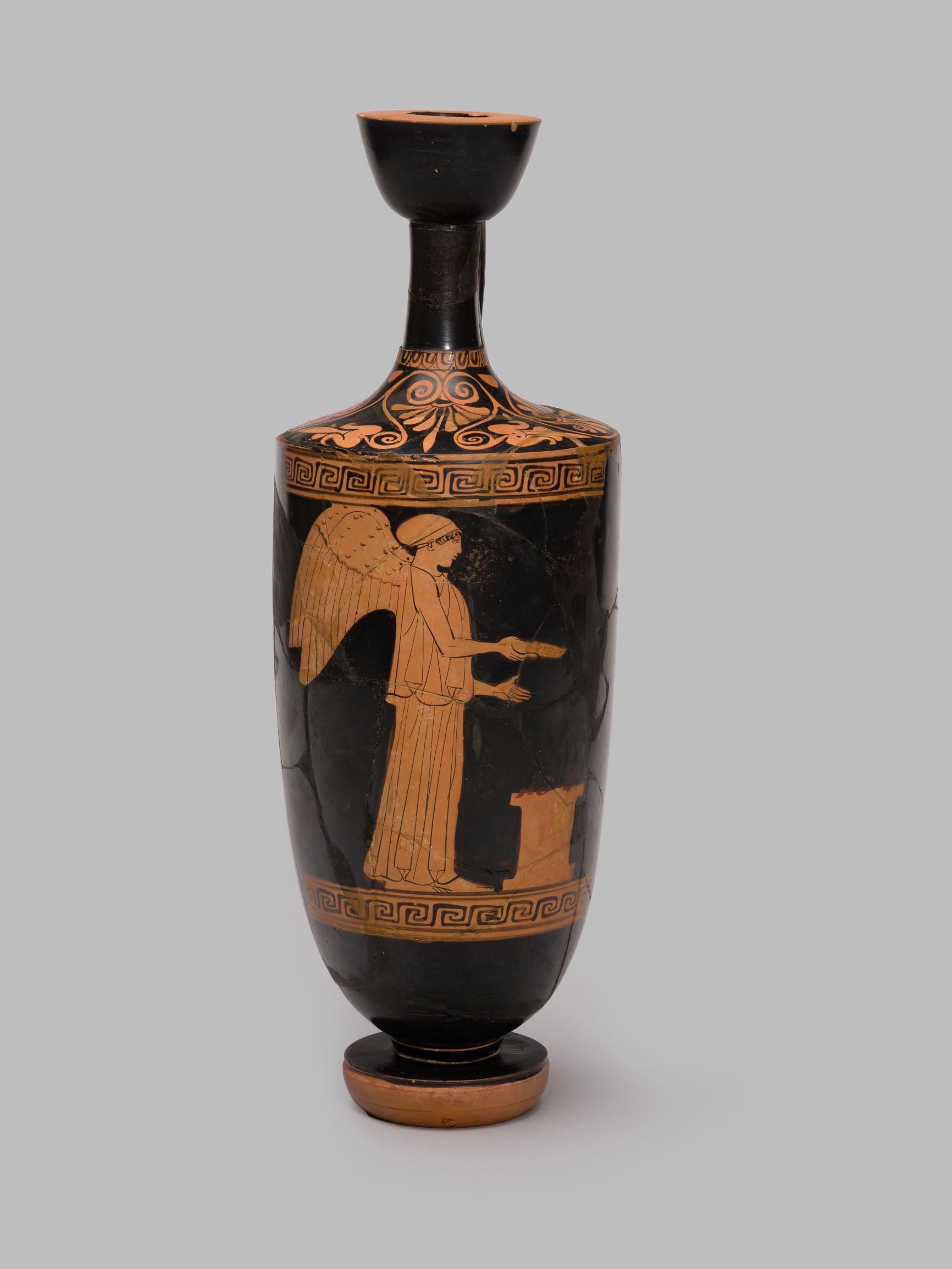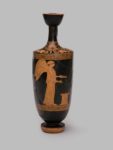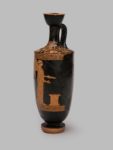
Lekythos [Gr30]
Athenian Red-Figure, near the Painter of London E 342, c. 460 BC
Painted terracotta (h. 35.3 cm, d. 11.9 cm), mended and restored
A winged Nike standing in front of an altar, holding a phiale in her right hand. On the shoulder, a pattern of palmettes and lotus buds joined by tendrils, below the shoulder a meander between lines.
Vases of this shape are known as lekythoi and were used to contain oil. The narrow neck prevented spillage of the valuable liquid and helped when pouring. Oil flasks might be used around the home, or to anoint the body at the baths or in the gymnasium. They also had an important role in funerary rites and are commonly found as grave goods.
On this vase is Nike, the goddess of victory, recognisable by her wings. She stands before an altar, wearing a sakkos and peplos. In her hand is a phiale, a shallow bowl used for making libations (a poured offering to a deity or for the dead). Red pigment has been used to depict flames rising from the altar. Athenian vases often show real women, as wells as goddesses, taking part in religious rituals like this one.
Literature: J. Falconer and T. Mannack, Corpus Vasorum Antiquorum: Great Britain, Fascicule 19: Winchester College (Oxford, 2002), pp. 10-11, plate 9.1-3; J.D. Beazley, Attic Red-Figure Vase-Painters 2nd edn. (Oxford, 1963), p. 671.1, 1664; J.M. Hammond, Greek Vaes in the Museum, Supplement to The Wykehamist, No. 1099 (6 March, 1962), p. 4, fig. 7; Winchester College Memorial Buildings: Department of Classical Art (Winchester, 1909), p. 21 (no. 66)
Exhibited: Gosport Discovery Centre, March-May 2007
Provenance: Gift of Miss Preston before 1909
Location: Treasury, Gallery 3

